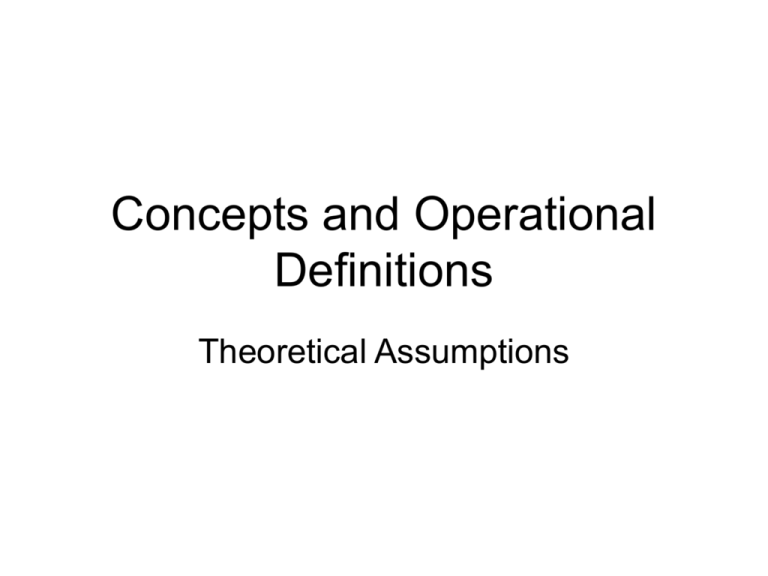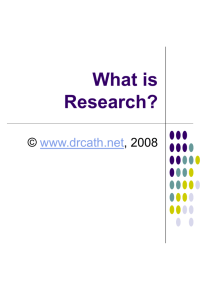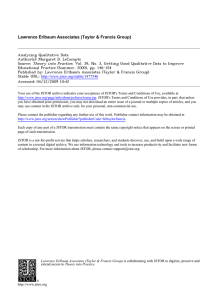Concepts and Operational Definitions
advertisement

Concepts and Operational Definitions Theoretical Assumptions Concepts can be: • One dimensional and have only one value. (For example if you only interview women, gender = women). • Some concepts have multiple subparts or categories. (Gender = Male or Female). • Classifications are partway between a single concept and a theory. For example, we could breakdown the concept of empowerment as an outcome of intervention into at least three dimensions – improvements in self-efficacy, successful self-advocacy, and involvement in the political process. • All standardized scales breakdown concepts into multiple subparts – that are summed up to construct the scale – and used to describe a single concept. In qualitative research: • We use simple concepts. • We describe the concept that will be measured. • We do not go into detail about how it will be measured (observation, interviews, content analysis) except to define how the research will be conducted, sampling methods, and the time and place it will be conducted. We may however, place some structure on how we collect data (for example, a set of interview questions will often be developed). • For data analysis, we do develop conceptual classification systems after we collect data for analyzing our data. In quantitative research: We construct operational definitions that include: 1) A detailed definition of the concept 2) Information about the scope of the concept measured. 3) Detailed information about how the concept will be measured. Standardized, structured methods for collecting the data are described. The concepts will contain several different values or categories (variables). We also derive our concepts from previous theories. We examine how previous researchers have defined the concept. One approach to research, meta analysis, examines how operational definitions vary from study to study and how these definitions influence the findings. Examples of concepts: • Qualitative: Perceptions of domestic violence; interactions between clients and workers in a public agency. Hmong beliefs about birthing practices. • Quantitative: Depression; Self-Efficacy; Support for Candidate; Drop-out Rates. Concepts are: • • • • Used to express an abstract idea. Often related to other concepts. Contain a definition of the concept. Contain some information about the scope of the concept. For example, we can define social work students in a variety of ways – all MSW students, all students in this class, etc.) • Can be found through experience, observation, or from previous theories or empirical research. Dictionary definitions can also be used to define concepts. To create an operational definition we need to both define the concept and state how we will measure it: • Depression: A state of excessive sadness or hopelessness, often with physical symptoms (Oxford American Dictionary, 1980). • As measured using Beck’s Depression Inventory • You should also include the target population (scope) in the operational definition. For example, depression among adolescent girls, age 13-18. Theories: • Are statements linking cause and effect. • Express ideals about how society should work or does work. • Have been empirically tested and verified. • Provide different explanations for different phenomena. The choice of theory is up to the researcher. Everyone will not simply agree with each theory. Quantitative researchers review different theories about one phenomena and then choose one theory to test. Theories in quantitative research • Determine independent and dependent variables. • Determine hypotheses. • Are used to construct standardized research instruments • Help guide how data is analyzed (statistical methods) Theories in qualitative research: • Determine how the research is conducted. • Determine (to some extent) the research questions addressed • Can be used after data is collected to analyze the data or explain the findings. In qualitative studies, some theoretical frameworks can be viewed as biases • This is true of all theories and research studies. • In qualitative research, it is expected that such biases or theoretical frameworks be fully described by the researchers.






